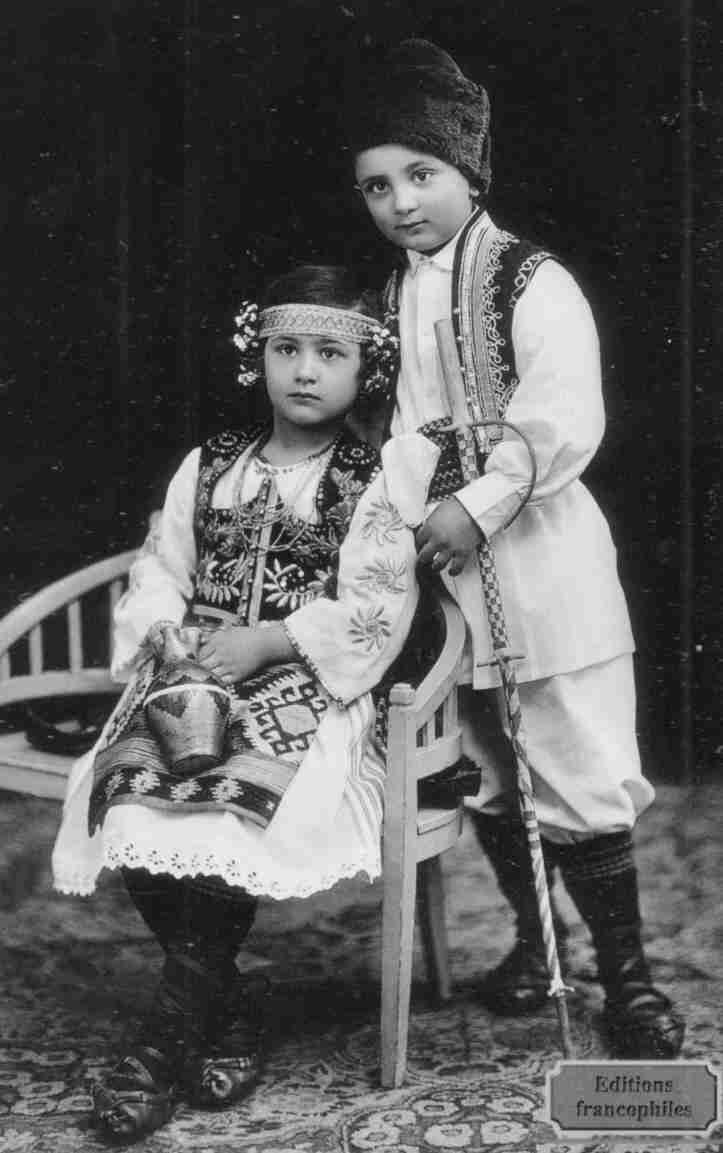
Serbian Folk Costumes

Figure 1.--Here we see Serbian folk costumes worn by a brother and sister. The portrait is undated, but was probably taken about 1910. The outfits here are presumably costumes to be worn on special days. By the 1910s folk costumes were no longer being commonly worm, although they could still be seen in rural areas. We have no details on the garments the children are wearing. The image was coded, "Sestra i brat kod fotografa". That means in part that they are sister and brother. I'm also not sure what the boy is holding in his hand.
|
|
We have little information on Serbian folk costumes. Styles seem to have evolved from medieval and Turkish styles. Almost no clothing has survived from the medievel era, and those that have survived are eclesiastical robes. Dubrovnik was the major Sebian center producing woven fabric. Ordinary Serbs wore clothes made from sclavina or schiavina which was a rather rough woollen fabric. Linen was also produced in medievel Serbia. Silk production was more limited, but was reported at the Dečani Monastery and around Prizren. This is also the case of folk costumes in other Balkan countries and of course reflects the centuries of Ottoman rule. While we have little information at this time, we will add additional information here as we acuire new images and added information. Folk costumes wee commonly worn in the 19th century. Even in the mid-20th century folk costumes could still be seen, but ,ostly worn by women in fural areas. Fol costumes are no longer commonly worn. They are now special outfits worn for national holidays and other celebrations. This is most common in rural areas. There are regional variations, but the Jelek is an important garment in most folk costimes. The Jelek is a waistcoat orvest, commonly made of wool or velvet. Women's jackets might be lined with fur. Embroidery is an important part of Serb folk costumes. Embriodery is commonly found on aprons, socks and other garments. Bright red embroidery is common. This is said to reprsent blood lost at the Battle of Kosovo against the Turks. Another common garment is the Opanak, footwear said to have been worn in medieval times before the Ottoman conquest.
HBC

Navigate the Boys' Historical Clothing Web Site:
[Introduction]
[Activities]
[Biographies]
[Chronology]
[Clothing styles]
[Countries]
[Bibliographies]
[Contributions]
[Essays]
[FAQs]
[German glossary]
[Satellites]
[Tools]
[Boys' Clothing Home]
Navigate the Boys' Historical Clothing national pages:
[Return to the Main Serbian page]
[Return to the Main European country page]
[Australia]
[Austria]
[Belgium]
[England]
[France]
[Germany]
[Ireland]
[Italy]
[Japan]
[Korea]
[Mexico]
[New Zealand]
[Scotland]
[United States]
Created: 10:08 PM 9/6/2006
Last updated: 3:01 PM 9/7/2006



